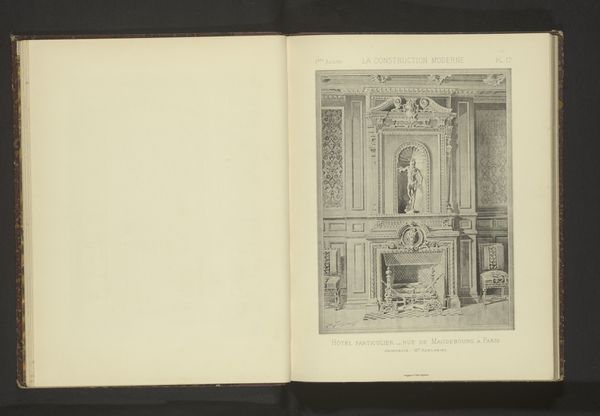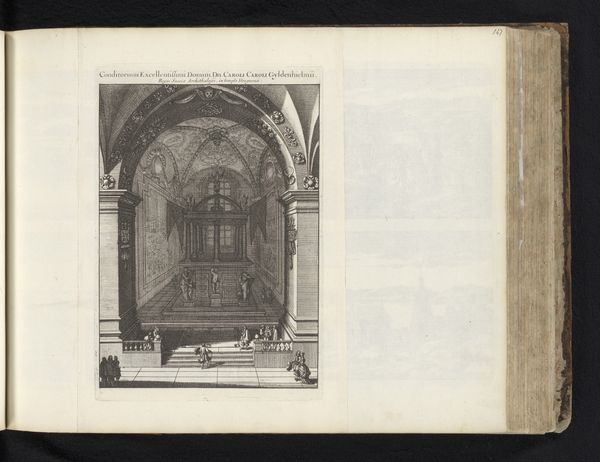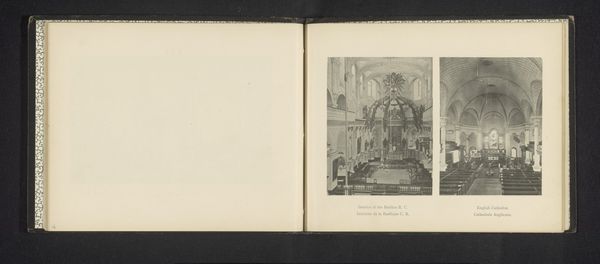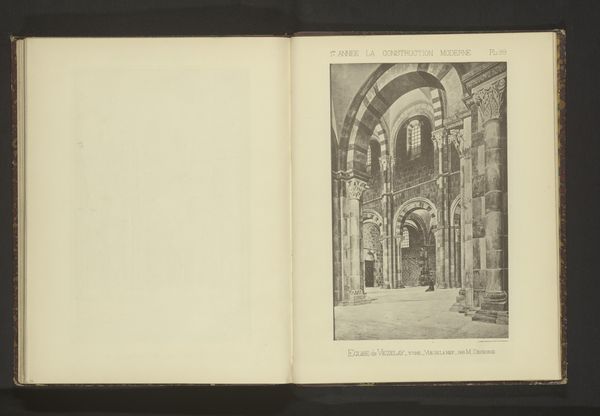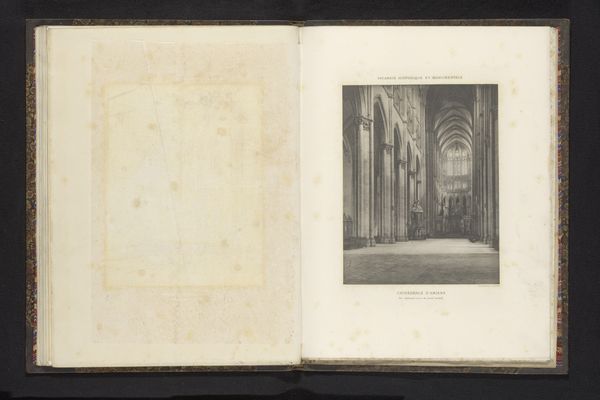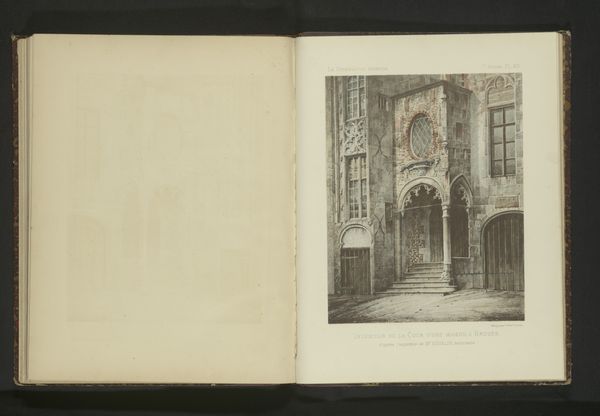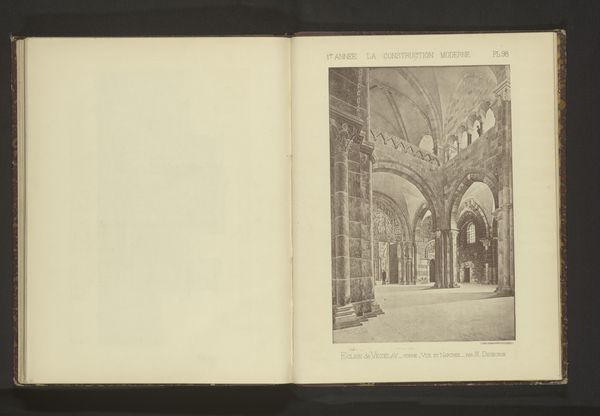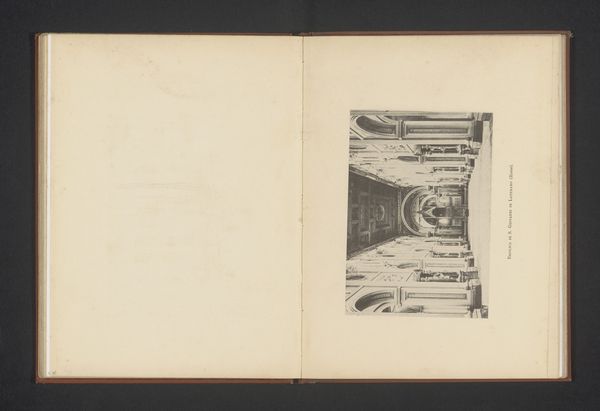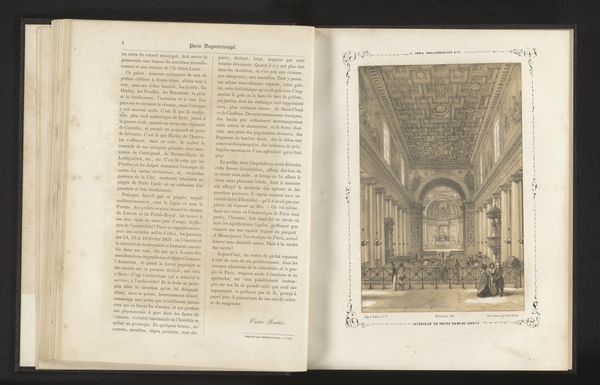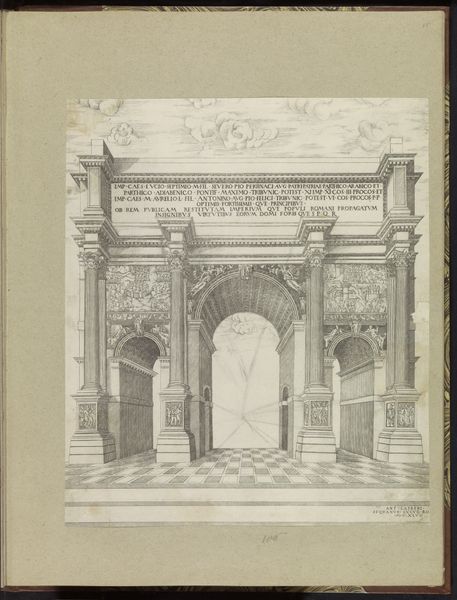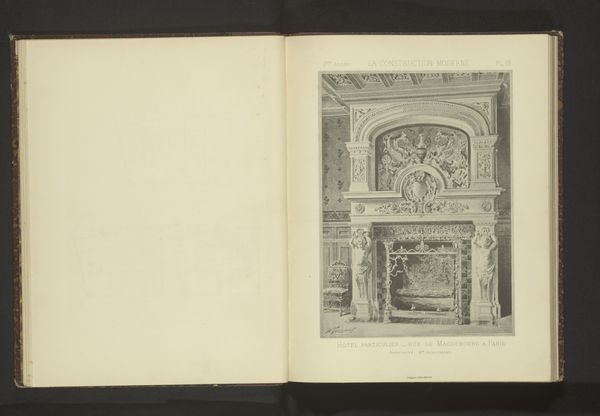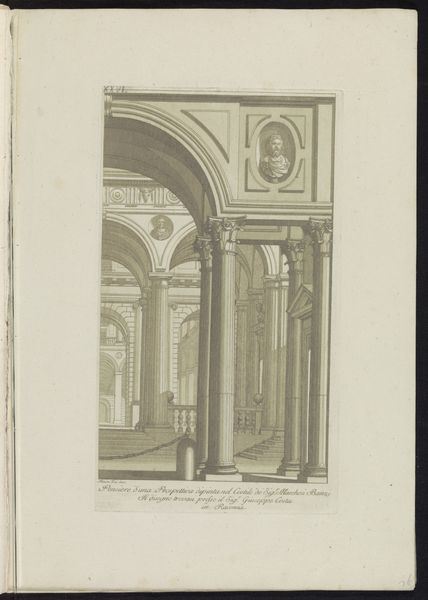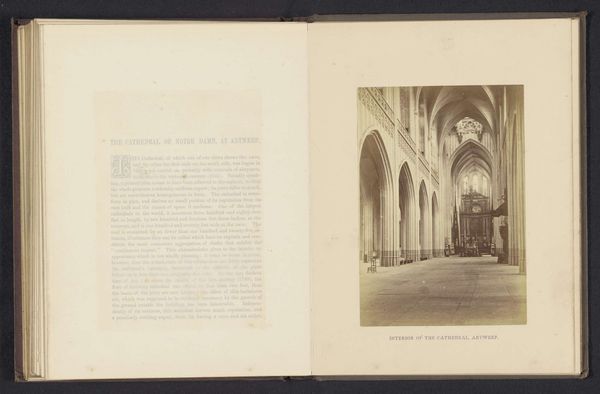
Reproductie van een prent van een gang in een stadspaleis door Henri Toussaint before 1886
0:00
0:00
Dimensions: height 245 mm, width 195 mm
Copyright: Rijks Museum: Open Domain
Editor: Here we have an image of an engraving made before 1886 titled "Reproductie van een prent van een gang in een stadspaleis" by Henri Toussaint, depicting a hallway. The perspective draws me right in, but something about its rigid structure also feels cold and austere. What do you see in this piece, and how do you interpret its grandeur? Curator: It's interesting that you picked up on the austerity. While seemingly a celebration of Neoclassical grandeur, let's consider what this kind of architectural representation meant at the time. Think about who typically occupied such spaces in pre-1886 Europe. It wasn't exactly a diverse bunch, was it? How do you think the artist's choice to focus on an interior, devoid of people, speaks to the power dynamics at play? Editor: That’s a fascinating point. Focusing on the architecture rather than the inhabitants almost seems like an erasure, highlighting the space while obscuring the lives within it, like it's almost glorifying an elite absent class by emphasizing this empty grandeur. Curator: Exactly. The meticulous detail in rendering the architecture, devoid of any humanizing element, almost reinforces the sense of power embedded within the space. Can we consider it as a critical commentary of the class disparity or merely an homage to the powerful? The absence becomes a presence, demanding that we acknowledge the unseen figures who benefited, or were excluded, from this opulence. Editor: I see it now. The opulence becomes unsettling. It isn't just about beauty; it's about who gets to experience that beauty and at what cost. The empty hallway suddenly feels very full of unspoken social commentary. Curator: Precisely. And in our engagement with artworks, that's often what we need to be doing: listening to what it may mean by its inclusions and exclusions, engaging in the stories art can tell. Editor: Thank you. I'm walking away today thinking more critically about absences and underlying politics, beyond the visual aesthetics. Curator: And that's exactly what these dialogues are for: learning together how art is very much about the power of images and politics of seeing.
Comments
No comments
Be the first to comment and join the conversation on the ultimate creative platform.
